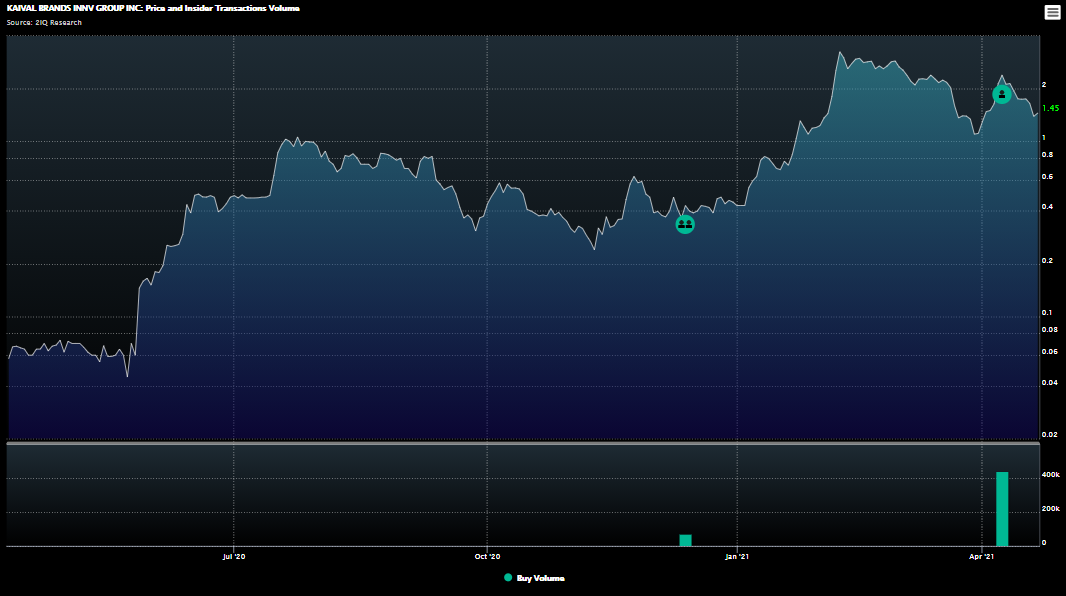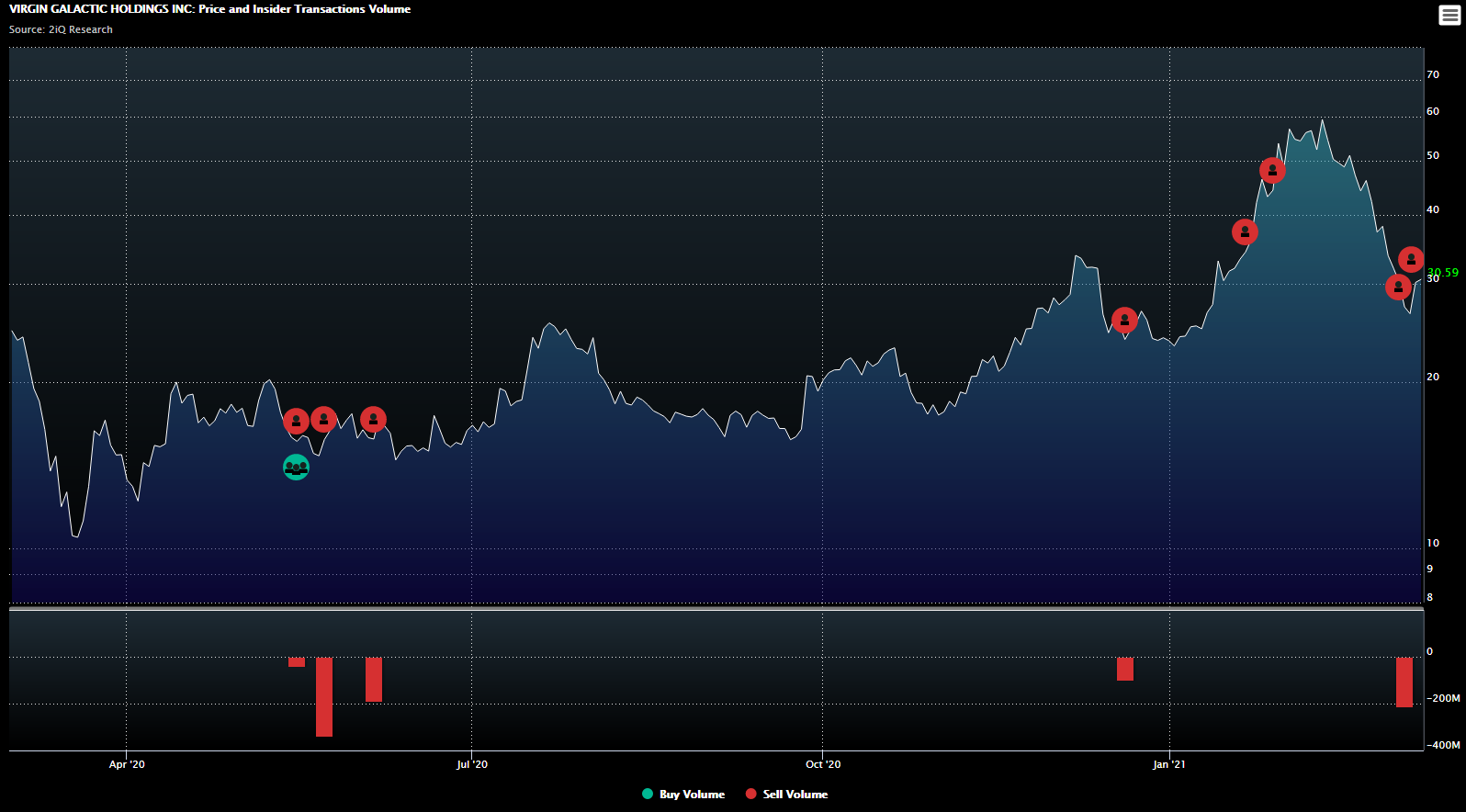What Are Insider Transactions And How Do You Track Insider Trading Activity?

Tracking insider transactions has always been considered a profitable way of identifying upward trends in a company.
Hedge funds, quants, and other institutional investors regularly use their own contacts and market research resources to pinpoint insider trading activity. In recent years, technology has made it easier to track insider trading activity. Data providers help investors to gain a greater understanding of a company’s insider transactions and how that activity may affect their investment.
Through this guide, we will explain what insider transactions are and provide an overview of the ways an investor can track insider trading activity.
Contents:
Insider trading: A brief overview
How do I find insider trading transactions?
Understanding insider trading through some examples
Who is considered an insider?
What tools do I need to monitor and track insider activity?
Conclusion
Insider Trading: A Brief Overview
Insider trading involves the sale or purchase of a public company's shares by someone (most often an employee) who has non-public, material information about the company.
Insider trading can be legal or illegal, depending on whether the insider adheres to regulations.
Take the U.S. Securities and Exchange Commission (SEC), which enforces the law against stock market manipulation, as an example. The independent agency states that the information that an investor bases their trade on must be public at the time of their trade.
This means that an insider is allowed to know about developments in their company that could potentially affect its share price, but they cannot act on that information until it has been made public.
In addition to this, the SEC prohibits insiders from disposing of shares within six months of their purchase. This means the insider is compelled to hold their shares for at least six months. Therefore, in most cases, an insider buying shares in their company often suggests that they believe that the company’s share price will increase in the future.
Fidelity Investments manager Peter Lynch explained this behaviour when he famously said: "Insiders might sell their shares for any number of reasons, but they buy them for only one: they think the price will rise.”
There has also been research into whether insider trading investment strategies are more profitable. A 2003 study by Harvard University's Leslie A. Jeng and Richard Zeckhauser, and Yale University's Andrew Metrick, found that insider purchases beat the market by 11.2% per year.
How Do I Find Insider Transactions?
Tracking insider transactions is undoubtedly more challenging than it sounds. Exchanges like the New York Stock Exchange (NYSE) list thousands of companies, each with hundreds of thousands of transactions every day.
It can be time-consuming to trawl through filing after filing to find a notable case of insider trading. Furthermore, important insider transactions do not always come from high-profile company executives. Insider transactions made by relatively lesser-known executives can go unnoticed.
One way for investors to find insider trading information about a specific company is to consult a regulator’s database. For example, on the SEC’s website is the EDGAR (Electronic Data Gathering, Analysis, and Retrieval) database, which contains the following information:
Form 3: This form is the initial statement that an insider completes. They must file Form 3 within ten days of obtaining insider status.
Form 4: This document shows an insider’s activity, such as a change in the insider’s position as a shareholder, how many shares the person bought or sold, and other relevant changes.
Form 5: This annual report covers smaller transactions that are not required on Form 4, such as internal stock transfers.
Form 144: This serves as a public declaration by an insider of the intention to sell restricted stock — stock that the insider was awarded, received from the company as compensation, or bought during employment. All insiders are required to hold restricted stock for at least one year before they sell it. They must also sell the stock within 90 days of filing a Form 144.
The official documentation is just one source of insider transaction information. Another is news reports from newspapers and online publications. Examples include Forbes, Financial Times, Bloomberg, Financial News, and other sources of stock market reporting.
Nowadays, social media is also used by investors to track insider trading activity and insider transactions. For example, accounts on Twitter provide regular reports on recent insider buying and selling.
Understanding Insider Trading Through Some Examples
We will now highlight some recent insider trading reports to show how an investor can analyse insider transaction activity.
Mytilineos SA
Greek industrial company Mytilineos SA saw insider buying on 22nd and 26th April 2021. General Manager for the company’s Renewables & Storage Development Business Unit, Nikos Papapetrou, bought 39,000 shares on three different occasions during the period. He spent around €600,000 on these insider transactions.
**What makes this trade stand out?
**Looking back recently, Papapetrou has made several well-timed purchases. In October 2020, he spent approximately €4 million on stock when the share price was under €10 per share. Since then, the stock has risen to €15.40 per share, marking an increase of more than 50%. This outcome could suggest that Papapetrou times his stock purchases successfully.Kaival Brands Innovations Group Inc
Chief Executive Nirajkumar Patel made four insider transaction filings with the SEC between 8th and 9th April. His purchase of 194,875 shares cost him over $440,000 and increased his holding by 29%
What makes this trade stand out?
Patel is the company’s Chief Executive and holding that position suggests he may have comprehensive insight into the company’s prospects. When an executive increases their holding by such a substantial amount, it usually signifies an overall bullish trend.Virgin Galactic Holdings Inc
In early March 2021, Chamath Palihapitiya, Virgin Galactic’s Chairman, sold 6.2 million SPCE shares. This generated approximately $213 million for the billionaire insider.
What makes this trade stand out?
The insider has gone from holding 10 million SPCE shares to zero shares. Even with this sale, it is worth noting that Palihapitiya continues to indirectly own more than 15 million shares through Social Capital Hedosophia Holdings. This holding company was formed with fellow investor Ian Osborne.
Investors tracking the insider trading in these companies may have used these events to make an investment decision at that point in time or they may choose to base a future investment decision on this information alongside other data and insight. Investors use insider trading activity in a variety of different ways.
Who is an Insider?
Let’s focus on the United States stock markets as an example. The SEC defines insiders as the "management, officers or any beneficial owners with more than 10% class of a company’s security.”
Simply put, insiders are people or an organisation that owns a substantial amount of equity in a publicly listed company. This includes:
Chairperson: A chairperson is usually the presiding officer of the board of directors.
Chief Executive: The Chief Executive Officer (or the CEO) is typically the highest-ranking executive in an organisation. A CEO is expected to be the public face of the company. The Chairman of a company may sometimes also function as the CEO. This depends on the company size and structure.
C-suite Executive: C-suite executives head up different departments in a company. These executives also populate the board of directors. The Chief Financial Officer (CFO) is an example of a C-suite executive. They oversee financial decisions in a company. The Chief Information Officer (CIO) is another title. CIOs are in charge of an organisation’s technology.
Non-executive director: Non-executive directors sometimes own large volumes of stock. They are a member of the board of directors, but not a member of the executive management team.
Investment firm: Venture capitalists, investment funds, and other private capital organisations may own more than 10% of a company. Investors often take note of any changes these organisations make to their holdings.
What Tools Do I Need to Monitor and Track Insider Activity?
Each investor has their own collection of tools, technologies, databases, and sources. This varies investor-to-investor because every investor has a unique strategy that uses insider transaction data in a different way.
Official databases - stock exchanges and their regulators are required to record insider transactions.
Financial news websites - these provide in-depth information about high-profile recent insider purchases and analysis.
Research houses - these providers monitor companies and their insiders to provide their clients with investment reports.
Data providers - these provide comprehensive, accurate insider transaction data to investment professionals.
Conclusion
Insider trading is an important signal that can help gauge a company’s performance.
Insider transactions give those outside of a company an opportunity to assess whether an insider is willing to spend their own money on a company’s shares. Alternatively, an insider that sells shares may signify a negative change to that company’s performance.
However an investor chooses to use insider transaction data, it is worth remembering that it is best combined with other investment analysis, reports, and trends.
Find out more on what insider transactions you should focus on here.
Latest Stories

Grizzly Short Hits Trustpilot Amid Harsh Review-Manipulation Claims

Grindr Surges After Billionaire Owner Withdraws Buyout Bid and Buys Shares

Leadership Betting on the Adtran Holdings’ Future

Tutor Perini Leadership Shows Confidence with Multi-Million Dollar Buys

Arbor Realty Trust Sees Bold Insider Buying Amid Market Lows